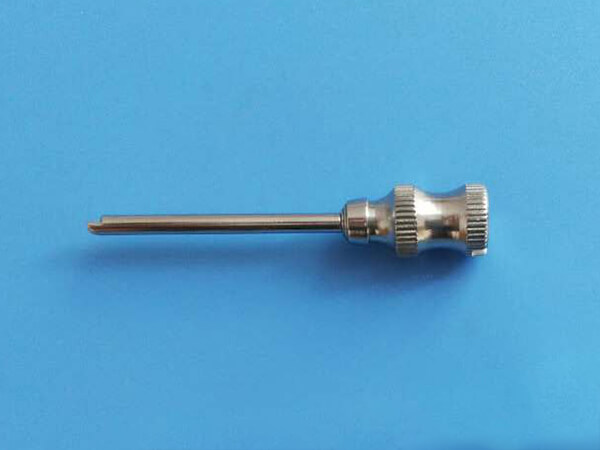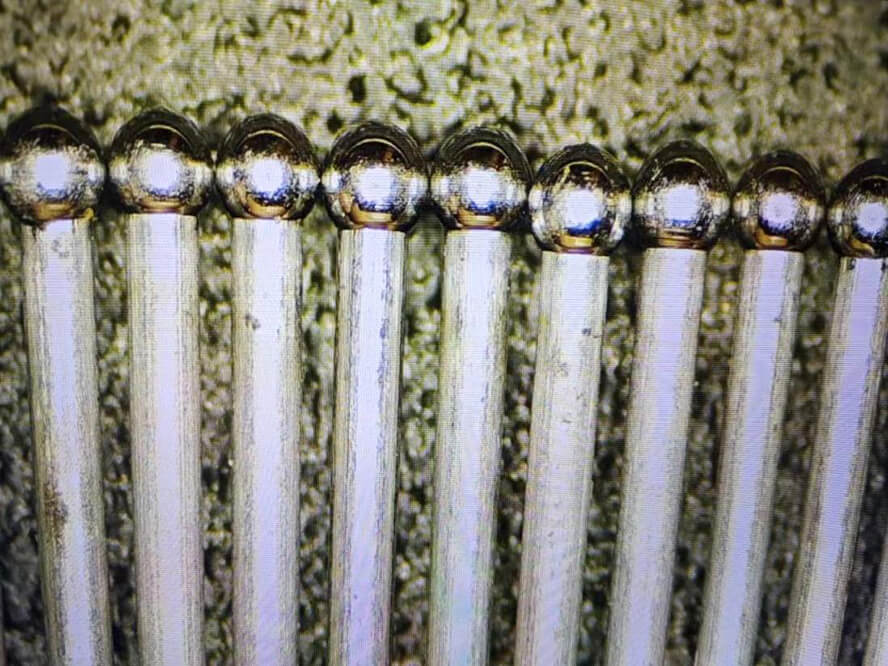Application Scenarios of Microbeam Plasma Welding:
Microbeam plasma welding is a technique that uses a tiny, concentrated electric arc to weld thin or delicate materials. Notably characterized by its high precision and minimal thermal impact, this method is especially suitable for precision welding or micro-component welding. Here’s a brief introduction to several application scenarios:
- Guidewire: Widely used in medical, precision electronics, and sensor sectors, there are times we need to weld small components or sensors onto guidewires. Given that medical guidewires often function within blood vessels, the welding junction and the end of the guidewire require smoothness and strength. The end must also retain sensitive tactile feedback. These needs can be met through microbeam plasma welding.

- Needle Tip Closure: In the medical realm, biopsy needles, syringes, and other needle-like structures with sharp ends can cause discomfort to patients. There’s a need to round the needle tips. Traditional methods might involve spin-welding, but the results might be suboptimal. Microbeam plasma welding ensures an even closure without deformity, offering an ideal solution.

- End Rounding of Thin Rods: Rounding the ends of wires or rods is a common industrial process. Similar to needle tip closure, the ends can be melted through microbeam plasma welding, resulting in a defect-free, uniform hemispherical shape due to the material’s cohesive forces.
- Ball-tip Welding: Often, metal wires or guidewires need ball-shaped ends. The precision arc from microbeam plasma welding can melt the wire end, forming a smooth and uniform ball structure due to the material’s inherent cohesion. Wires with ball-shaped ends are often used in biopsy forceps, offering excellent grip and push-pull effects.

- Forceps and Other Pincer Structures: At times, we need to weld precise and smooth pincer-like structures to the ends of wires. These movable gripping structures require high precision and surface quality in welding, demands that microbeam plasma welding can meet.

- Guidewire Binding: Some guidewires, made from multiple fine metal strands twisted together for flexibility, need their ends bound. This process must result in a smooth finish. Microbeam plasma welding can melt these fine strands, fusing them to produce a seamless end.
- Fine Metal Mesh Welding: In the production of delicate metal grids, such as some precision filter mesh equipment, the metallic strands are fine and closely spaced. Welding them securely is a precision task. Microbeam plasma welding, with its high accuracy and controllability, is ideal for joining such metal grids.
- Thermocouple: Thermocouples are typically made by welding two different metals. With a structure and material properties that produce a voltage that varies with temperature, precise welding is critical for accurate temperature measurements. The high precision of microbeam plasma welding ensures the thermocouple’s sensitivity, enhancing measurement accuracy.
Of course, the applications of microbeam plasma welding extend beyond the above. It is increasingly replacing other techniques in various domains. If you’re interested, please feel free to contact Deewi Automation.
